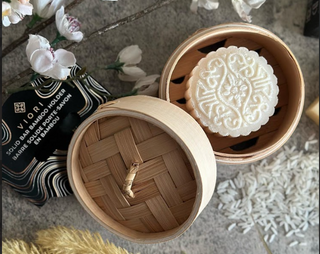Shampoo bars have gained popularity in recent years as a sustainable and eco-friendly alternative to traditional liquid shampoos. With their compact size and minimal packaging, they offer a convenient and waste-free option for hair care. However, when it comes to choosing the right shampoo bar, understanding the ingredients can be a bit overwhelming. In this blog post, we will decode the ingredients commonly found in shampoo bars, discussing the difference between natural and synthetic components. We will provide you with the information you need to make an informed decision about the shampoo bar that suits your hair and preferences.
1. Natural Ingredients: Nourishing and Gentle Cleansers Natural ingredients in shampoo bars are derived from plant-based sources and are known for their nourishing and gentle cleansing properties. Here are some commonly used natural ingredients:
Sodium Cocoyl Isethionate: This ingredient is derived from coconut oil and is responsible for creating a rich lather and effectively removing dirt and oil from the hair.
1. Natural Ingredients: Nourishing and Gentle Cleansers Natural ingredients in shampoo bars are derived from plant-based sources and are known for their nourishing and gentle cleansing properties. Here are some commonly used natural ingredients:
Sodium Cocoyl Isethionate: This ingredient is derived from coconut oil and is responsible for creating a rich lather and effectively removing dirt and oil from the hair.
- Coconut Oil: Known for its moisturizing properties, coconut oil helps to hydrate and condition the hair, leaving it soft and manageable.
- Shea Butter: Extracted from the nuts of the shea tree, shea butter is rich in vitamins and fatty acids that nourish and protect the hair, promoting overall hair health.
- Argan Oil: Derived from the kernels of the argan tree, argan oil is packed with antioxidants and essential fatty acids that moisturize and add shine to the hair.
- Disodium Laureth Sulfosuccinate: This mild surfactant helps to create a rich lather and effectively cleanse the hair without stripping away its natural oils.
- Polyquaternium-7: This conditioning agent helps to detangle the hair, reduce static, and improve manageability.
- Preservatives: Shampoo bars may contain preservatives such as phenoxyethanol or sodium benzoate to prevent the growth of bacteria and prolong the shelf life of the product.
- Sulfate-Free Formulas: Sulfates, such as Sodium Lauryl Sulfate (SLS) and Sodium Laureth Sulfate (SLES), are commonly found in traditional liquid shampoos and can be harsh on the hair and scalp. Opting for a sulfate-free shampoo bar can help prevent over-stripping of natural oils and maintain the health of your hair.
- Hydrating and Moisturizing Ingredients: Look for shampoo bars that contain ingredients like coconut oil, shea butter, or argan oil, which provide hydration and nourishment to the hair, leaving it soft and manageable.
- Consider Your Hair Type: Different hair types have different needs. If you have dry or damaged hair, look for shampoo bars that offer extra moisturizing properties. If you have oily hair, consider a shampoo bar with balancing ingredients like tea tree oil or witch hazel.
Conclusion: Decoding the ingredients in shampoo bars can help you make an informed decision about the product that best suits your hair type and preferences. Natural ingredients provide nourishment and gentle cleansing, while synthetic ingredients enhance performance and stability. By opting for sulfate-free formulas and considering your specific hair needs, you can find a shampoo bar that promotes healthy, beautiful hair. Remember, it's always important to do a patch test before using any new hair care product to ensure compatibility with your skin and scalp.
We hope this guide has provided you with valuable insights into navigating the world of shampoo bar ingredients. Happy hair care!
We hope this guide has provided you with valuable insights into navigating the world of shampoo bar ingredients. Happy hair care!

